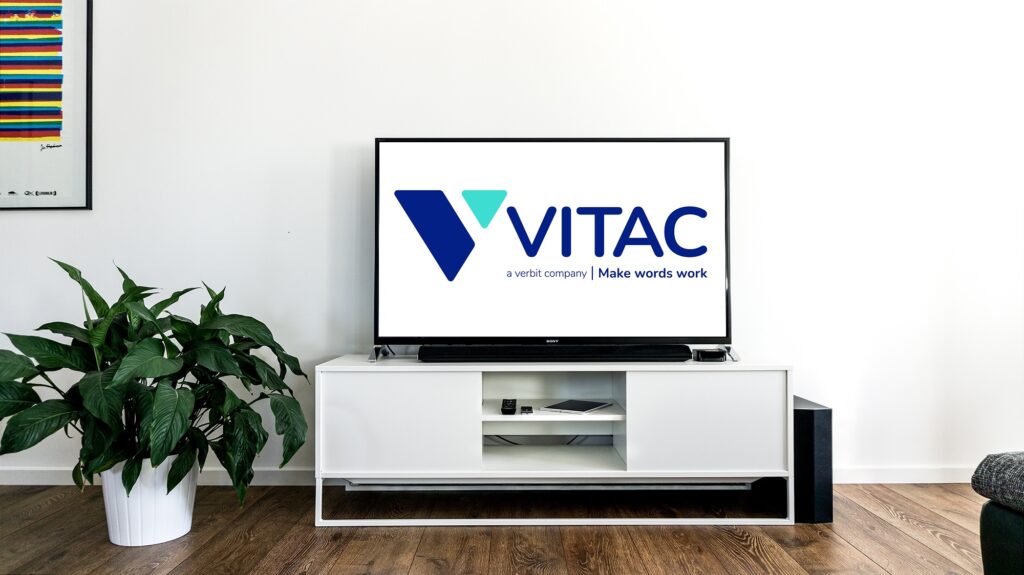Going to the movies is a much-beloved pastime, and it’s not hard to see why. For starters, the iconic popcorn, candy, and soda snacks at movies can’t be beat. Movie theaters are also an activity that can offer shelter from sweltering summer temps or an escape from cold or rainy days.
But theaters that don’t include captions for their movie showings leave out the many people who rely on captions for their entertainment experience. Captions make audio-visual content accessible for the 20% of people worldwide who are deaf or hard of hearing. And the need for captions doesn’t go away if someone is in a theater instead of at home. While the Americans with Disabilities Act (ADA) requires movie theaters to offer accommodations for movie-goers who are deaf or hard of hearing, those accommodations don’t require open captions on screen. However, theaters can choose to have captions on the screen (free of charge to theaters) and use this to satisfy the accommodation requirement.
Many theaters have opted to meet ADA requirements by offering movie theater closed captions through different electronic mechanisms. Some offer closed captions via glasses, others by a device connected with a flexible long stem that leads to the moviegoer’s cup holder in the movie theater seat. While these devices technically meet ADA requirements, they can prove unsatisfactory in delivering accessibility.
Why Devices Aren’t the Answer
A closed caption device forces users to toggle their vision between the closed caption device and the movie screen, potentially missing key action. Issues with glasses or closed caption devices can range from questions of sanitation and cleanliness, to problems with the devices being charged properly. Additional devices also require more operation training for movie theater staff, so if moviegoers requesting the equipment encounter staff untrained on the assistive tech, the moviegoer’s experience is likely to suffer.
Due to issues with movie theater closed captioning’s assistive technology, activists have been pushing for more open caption movie showings and requirements for open captions in theaters around the country.
Terri Shirley, Hearing Loss Association of America (HLAA) Boulder Chapter Vice President, says: “To remain ADA compliant for effective communication, theaters’ digital screens are accessible to individuals using closed captioning devices – unless there is a shortage of working devices or there is a device failure anytime in the movie’s duration even for just one person – or when open caption movies are offered, which is often more accessible to everyone.”
Proponents of open captions in movie theaters also point out there are issues with closed captioning movie theater devices, beyond even sanitation or functionality.
“Bearing the weight of the captioning devices [for] one to two hours leaves painful marks on the bridge of the nose,” says Debbie Mohney, HLAA Boulder Chapter President and Colorado State Chapter Coordinator.
Captions Benefit Everyone
It’s also worth noting that captions are beneficial for many audience members, not just those who are deaf or hard of hearing. The benefits of captions include increased comprehension, especially for those watching a film in another language, increased literacy at every age level, and increased retention. In short, captions open movies up to a wider audience, make audiences more likely to understand the plot, character arcs and motivations, and can even help audiences better remember, enjoy, and quote the movie after viewing.
Captions have also risen in popularity, for films and TV, for sporting events, and even for performance art. With so many benefits to captions, their rising popularity, and the issues with closed captioning devices, the case for open captions at the movies seems clear-cut. But open captions at the movies are still not always easy to find.
While requirements for open captions have started to change at the state and local levels, some theaters have independently announced plans to offer more captioned showings. And while proponents of open captions in theaters argue that voluntary offerings aren’t enough, the increase does mean that finding a showing with open captions may be easier than in previous years.
How to Find Open Captions at the Movies
So how is one to find a movie showing with open captions? We’re glad you asked.
Some larger chain theaters that have opted to voluntarily offer open captioned movie theater showings do advertise their open caption showings on their websites and apps. But even some smaller chains and small-town theaters have taken to offering more movie showings with open captions. Still other chains will offer open caption screenings upon request for larger groups with advance notice.
Advocates also have pointed out that the need to request captions in advance can bring privacy and safety concerns into question.
“What happens sometimes is that audience members can find out who requested open captions and give that person a hard time,” Mohney says.
Stories like this, unfortunately, aren’t a new problem, and aren’t even exclusive to the United States. Shirley has stories of her own in this regard, and says that “open captions are transparent for people with disabilities because they can attend with no one else knowing they have a disability and nothing needs to be discussed.”
Moviegoers looking for film screenings with open captions will have the best luck checking out the theater’s website and app ahead of time and utilizing any email or chat contact feature the website or app may enable. This, of course, does mean more legwork for moviegoers seeking captions, which is another one of the reasons why advocates are still pushing for open captions in theaters. After all, having to work twice as hard to find a movie ticket, or find a large group of people to request an open captioned screening, isn’t exactly creating an equitable experience for moviegoers who need captions for effective communication and to fully enjoy the movies.
There’s also a lot of people being left behind if just finding an accessible screening requires so much more legwork. Having a disability makes you part of the largest minority in the United States and the world, Shirley notes.
“You might be happy today’s advocates have paved the way for better accessibility if you or a loved one needs it down the road,” she says. “Increased access and ease of search capability to on-screen caption showtimes on a regular basis are accessible and convenient for all, regardless of age, size, disability or ability.”
Ultimately, captions make movies more accessible, inclusive, and transparent for a wider range of people. Open captions for movies can bring more people together to share and enjoy entertainment and stories, and that can also mean more ticket sales for theaters. For all these reasons, we hope open captioned showings in theaters will continue to increase so that everyone can find open captions coming soon to a theater near you.




